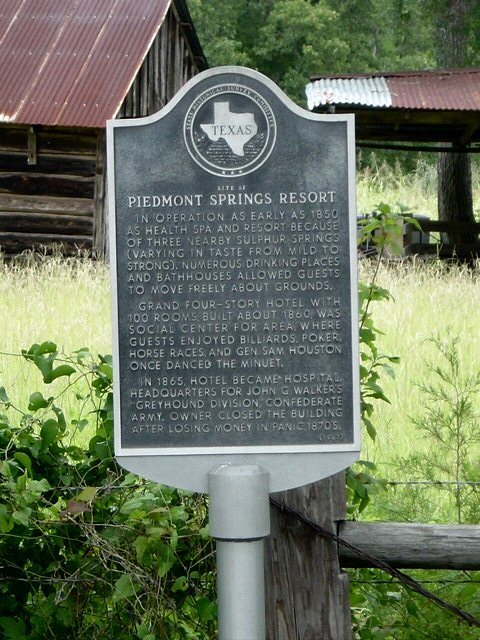|
The Piedmont Spring Resort and Spa was best known for its variety of sulphur spring bathing waters. William W. Arrington established the popular resort in the 1840s when he purchased the site and built bathhouses, cottages and a campground. In the beginning it was merely called Sulphur Springs. Arrington sold the property in 1858 to H. Lee and C. S. Taliaferro. Two years later the Taliaferros sold it to Leander Cannon. The resort by then had grown into a four story rock and wood hotel with hundreds of rooms, a veranda, a ballroom and a turreted roof. It was the place where it was known to be known to stay.
During the Civil War General Pierre G. T. Beauregard and his staff reportedly used the Piedmont for a time as headquarters during the Civil War. Some have said that even the officers’ wives boarded in a two story cottage on the grounds. But, in 1865, with the devastating years of the Civil War taking its toll, the Piedmont became the headquarters and a hospital for General John G. Walker’s Texas Greyhound Division following the Red River campaign. The Piedmont’s vast ballroom was converted into the hospital. Several of the soldiers, perhaps as many as near a dozen, died of their illnesses or wounds and were buried at the Piedmont in what are now unmarked graves. The gravesites are apparently located behind the Piedmont roadside historic marker and back of where the old resort swimming pool was situated. No records are available. One local historian also says that following the War Union soldiers also occupied the Piedmont as a hospital and some also died and are buried there. Long ago the graves were marked with tombstones and surrounded by a white picket fence. However, at this time, nothing remains. Faint remains of the swimming pool may still be visible. In 1871 the Piedmont, after falling on hard economical times in the late 1860s, sold at a bankruptcy sale for just under $6000 to John K. Spears. The site was then used only as a campground. The buildings deteriorated until finally being torn down. (The Piedmont was located on what is now Highway 3090 near where CR 185 and CR 190 intersect. The site is on privately owned property.) If anyone has additional information please contact by e-mail: [email protected] |

